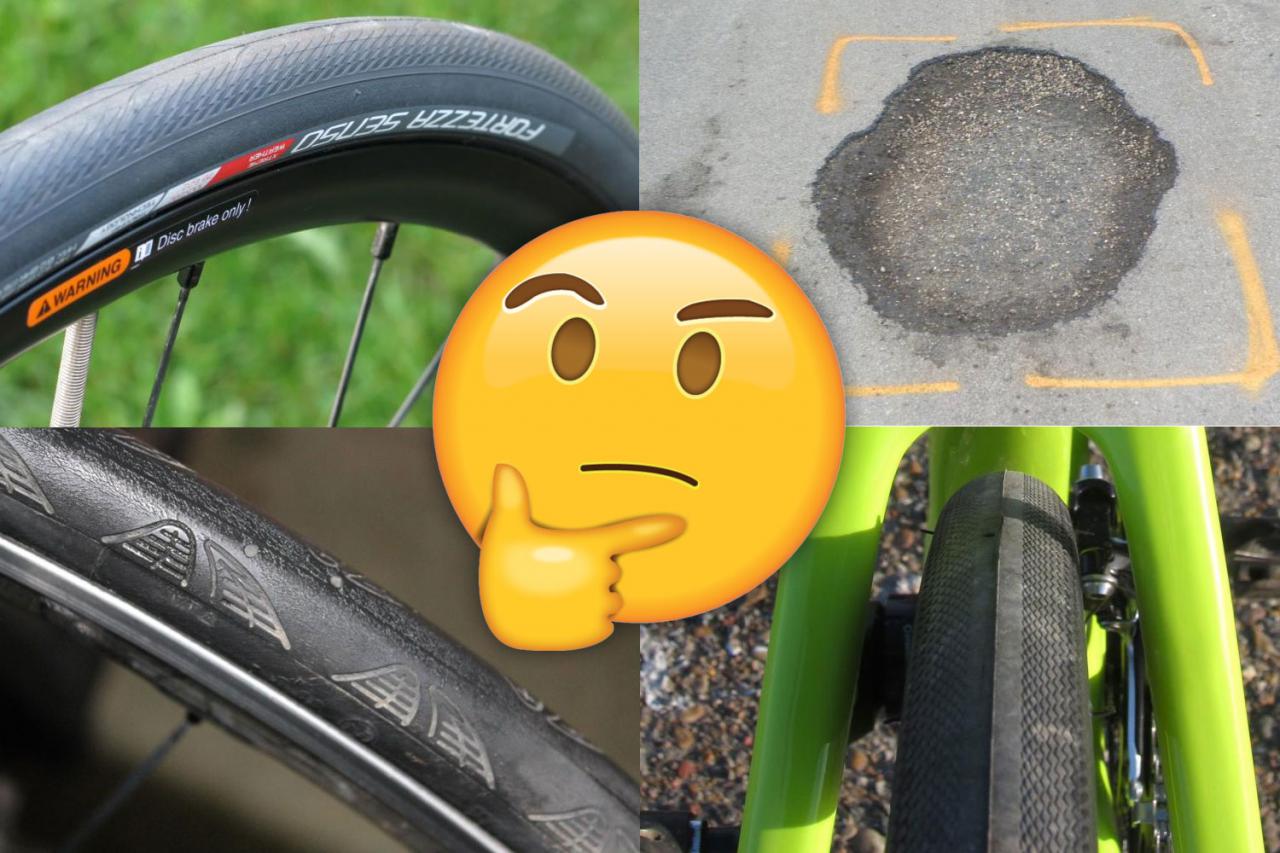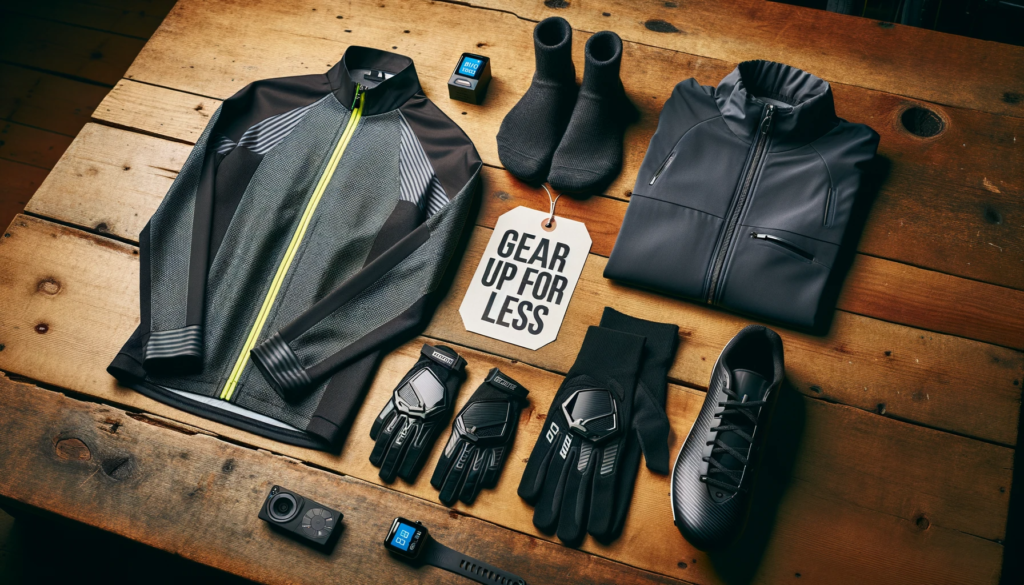If you ride a road bike regularly, chances are you’ve asked yourself this question at least once: “How often should I replace my road bike tires?”
Well, road bike tires should be replaced every 1000-3000 miles or when worn out. Road bike tires don’t last forever. They wear out, lose grip, and can become unsafe.
Knowing when to replace them can help you stay safe, ride better, and avoid unexpected flats. In this guide, we’ll explore everything you need to know about replacing your road bike tires.
Average Lifespan of Road Bike Tires
Let’s start with a general number. On average, road bike tires last between 1,000 and 3,000 miles. That’s a wide range, and that’s because not all tires are the same. Some are built for speed and performance, while others are made for durability.
- Racing tires (lightweight and fast): 1,000–2,000 miles
- Training or all-round tires (more durable): 2,000–3,000+ miles
Your riding style, road conditions, and tire quality all play a part. If you ride on rough roads or in bad weather, your tires may wear out sooner.
Factors That Affect Tire Wear
There’s no one-size-fits-all answer to tire life because many things influence how long your tires will last. Let’s break down the main ones.
1. Tire Quality
Not all tires are created equal. Higher-end tires often use softer rubber for better grip. But they tend to wear out faster. On the other hand, training tires are made with harder rubber that can last longer.
2. Road Conditions
Riding on smooth pavement helps your tires last longer. But rough roads, debris, potholes, and gravel can speed up wear and tear. Riding through glass or sharp stones can even cut your tires.
3. Rider Weight
Heavier riders tend to put more pressure on the tires. This can cause faster wear, especially on the rear tire.
4. Riding Habits
Do you brake hard or take sharp turns often? These habits can wear tires down quicker. Smooth and steady riders often get more mileage from their tires.
5. Tire Pressure
Proper tire pressure helps reduce wear and prevents pinch flats. Over- or under-inflated tires can damage the sidewalls or the tread.

Credit: road.cc
Rear Tire vs. Front Tire: Which Wears Out First?
Your rear tire usually wears out faster than the front. That’s because it handles more weight and is responsible for most of your propulsion. You can expect your rear tire to wear out about twice as fast as the front.
Some cyclists rotate their front and rear tires midway through their life. This can help even out the wear and extend the overall life of your tires. Just make sure the tires are in good condition before doing this.
Signs That You Need to Replace Your Tires
Even if you’re tracking your mileage, it’s important to keep an eye on your tires. Here are the key signs to watch for:
1. Worn Tread
Many road bike tires have slick surfaces or shallow treads. But even slick tires have a layer of rubber that wears down over time. If your tire looks flat or the tread pattern is gone, it’s time to replace it.
2. Cracks or Dry Rot
Check the sidewalls and tread for small cracks. These usually happen due to aging or exposure to sunlight. Cracked rubber means the tire is drying out and could fail.
3. Frequent Flats
Are you getting flats more often than usual? It might not be bad luck. Thin or worn tires are more likely to get punctured.
4. Bulges or Bubbles
Any bulges, bubbles, or deformities are a serious warning sign. They usually indicate a damaged tire casing. Replace the tire immediately if you see any of these.
5. Flat Spots or Cuts
Inspect your tires for cuts, slashes, or worn-out areas. A deep cut could lead to a blowout while riding.
Recommended Replacement Intervals
- Manufacturer Guidelines: Different bike tire manufacturers may have specific recommendations for tire replacement intervals. It’s essential to check the manufacturer’s guidelines for your specific tire model.
- Professional Inspection: Regularly have a professional inspect your road bike tires for wear and tear. A trained eye can identify signs of degradation that may not be apparent to the untrained individual.
- Mileage Considerations: Consider the mileage you’ve put on your road bike tires. Higher mileage may warrant more frequent replacements to ensure optimal safety and performance.
Should You Replace Both Tires at the Same Time?
Not necessarily. Since the rear tire wears out faster, you might only need to replace it. If your front tire is still in good condition, you can keep it a bit longer.
However, if both tires are worn or old, it’s smart to replace them together. New tires offer better grip, fewer flats, and more confidence—especially in wet conditions.
Tips to Extend Tire Life
You can’t make tires last forever, but you can take steps to help them last longer. Here’s how:
- Check pressure regularly. Keep your tires inflated within the recommended range.
- Clean your tires. Remove small stones or debris stuck in the tread.
- Inspect for damage. Check your tires after each ride.
- Store your bike indoors. Sunlight and heat can dry out rubber.
- Ride smoothly. Avoid sudden braking or skidding.
Doing these things won’t just extend tire life—they’ll also help you ride more safely.
How to Track Tire Mileage
It’s easy to lose track of how far you’ve ridden. But tracking your mileage helps you know when a tire is nearing the end of its life.
- Use a bike computer or fitness tracker to log rides.
- Keep a notebook or app to record when you install new tires.
- Note down any flats, cuts, or issues that could shorten tire life.
If you start seeing wear after 1,500 miles, you’ll have a good sense of when to expect your next replacement.
Choosing The Right Replacement Tires
When it comes to replacing road bike tires, it’s important to consider the matching tire specifications to ensure proper fit and performance.
Take into account your riding style and the type of terrain you frequently encounter.
Additionally, consider your budget and quality preferences to find the right balance. It’s essential to replace tires regularly to maintain safety and performance.
Diy Tire Replacement Tips
Replacing road bike tires is an essential part of bike maintenance. Necessary tools include tire levers, a pump, and a patch kit.
Here is a step-by-step process to replace your bike tires:
- Release the brake and remove the wheel,
- Use tire levers to remove the old tire,
- Inspect the rim and tire for damage,
- Install the new tire,
- Inflate the tire to the recommended pressure,
- Reattach the wheel and adjust the brakes. Precautions to take include checking the tire pressure regularly, avoiding overinflation, and inspecting the tires for wear and tear.
By following these tips, you can ensure your bike tires are in good condition for safe and enjoyable rides.
Frequently Asked Questions
How Long Should Road Bike Tires Last?
Road bike tires typically last between 2000 to 6000 miles, depending on usage and maintenance. Regular inspection and proper inflation can extend their lifespan.
How Do I Know When To Change Road Bike Tires?
Check road bike tires for wear indicators like tread depth and visible damage. Replace if tread is worn or cracked, or if there are frequent punctures. Consider changing every 2000-3000 miles or if tires show signs of aging. Regularly inspect for safety.
How Do I Know If My Road Bike Tires Are Bad?
Check for visible wear, cracks, bulges, or flat spots on the tires. Ensure proper inflation and tread depth for safety.
How Many Miles Can You Get On A Road Bike Tire?
A road bike tire can last for around 1,000 to 3,000 miles, depending on factors such as tire quality, road conditions, and riding style.
Conclusion
TSo, how often should you replace road bike tires? There’s no perfect number. But generally, expect to replace them every 1,000 to 3,000 miles, depending on how and where you ride.
Check your tires regularly. Watch for signs of wear, damage, or aging. Replace them before they fail—not after. Taking care of your tires means smoother rides, fewer flats, and safer cycling. After all, they’re the only contact point between your bike and the road. It’s worth paying attention to them.
Whether you’re a weekend rider or a daily commuter, good tires make all the difference. Keep them in shape, and they’ll take care of you in return.
| Summary of Key Points: |
| Regularly inspect tires for wear and tear. |
| Replace tires if tread depth is below recommended level. |
| Aim to replace road bike tires every 1000-3000 miles. |
| Maintain proper tire pressure for optimal performance. |
| Consider road conditions and riding style for tire longevity. |




